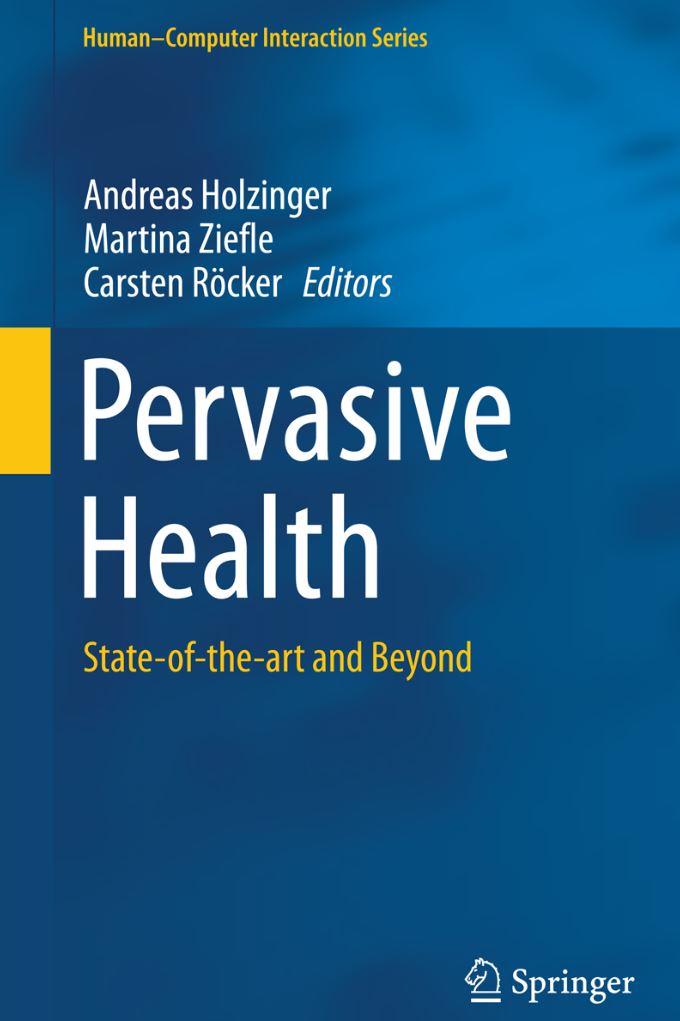Holzinger, A., Ziefle, M. & Röcker, C. 2014. Pervasive Health: State-of-the-Art and Beyond, London, Springer, doi:10.1007/978-1-4471-6413-5_1 [Springer Link], [Amazon], [Google Books]
- The first book to integrate the various aspects of pervasive healthcare systems in a single volume.
- Current and comprehensive overview of the field laying the groundwork for further researc.
- Interdisciplinary team of editors and authors provide a holistic introduction into the topic of pervasive computing for health.
Providing a comprehensive introduction into an overview of the field of pervasive healthcare applications, this volume incorporates a variety of timely topics ranging from medical sensors and hardware infrastructures, to software platforms and applications and addresses issues of user experience and technology acceptance. The recent developments in the area of information and communication technologies have laid the groundwork for new patient-centred healthcare solutions. While the majority of computer-supported healthcare tools designed in the last decades focused mainly on supporting care-givers and medical personnel, this trend changed with the introduction of pervasive healthcare technologies, which provide supportive and adaptive services for a broad variety and diverse set of end users. With contributions from key researchers the book integrates the various aspects of pervasive healthcare systems including application design, hardware development, system implementation, hardware and software infrastructures as well as end-user aspects providing an excellent overview of this important and evolving field.
Some background Information:
Health systems worldwide are challenged by big and complex sets of heterogeneous, high-dimensional, complex data and increasing amounts of unstructured information. Due to the fact that biomedicine, health and the life sciences are turning into a data intensive science, machine learning can help to more evidence-based decision-making and support to realize the grand goals of personalized medicine [Holzinger, A. 2014. Trends in Interactive Knowledge Discovery for Personalized Medicine: Cognitive Science meets Machine Learning. IEEE Intelligent Informatics Bulletin, 15, (1), 6-14].
A grand goal of future medicine is in modelling the complexity of patients to tailor medical decisions, health practices and therapies to the individual patient. This trend towards personalized medicine produces unprecedented amounts of data, and even though the fact that human experts are excellent at pattern recognition in dimensions of smaller than three, the problem is that most biomedical data is in arbitrarily high dimensions – much higher than three. This makes manual analysis difficult, yet often practically impossible. Consequently, experts in daily biomedical routine are decreasingly capable of dealing with the complexity of such data. Moreover, they are – understandably – not interested in struggling around with the complexity of their data sets. Rather, the experts need insight into the data, so to gain knowledge in order to support their direct workflows and to find answers to their questions and hypotheses. Therefore, it is necessary to provide efficient, useable and useful computational methods, algorithms and tools to discover knowledge and to interactively make sense of such high-dimensional data.

